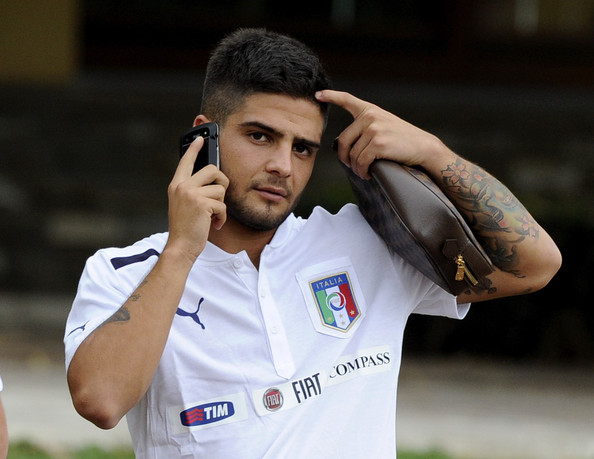
Lorenzo Insigne
As Lorenzo Insigne emerged from the bowels of the San Paolo and walked out onto the pitch ahead of Napoli’s Serie A match with Fiorentina on Sunday evening, it was broadcast over the loudspeaker that his name had been included in Cesare Prandelli’s 25-man Italy squad for the upcoming World Cup qualifiers against Bulgaria and Malta.
The announcement was met with delight in the stands. A warm roar reverberated around the cavernous ground in Fuorigrotta and must have left the hairs on the young Insigne’s neck standing on end. If it weren’t already enough that one of their own was down there playing in the Azzurro of Napoli then the wonderful news that he would also be donning the same colour, albeit in a darker shade, for Italy caused local pride to swell and provoked an outpouring of affection.
Moved by the reception he received from his home crowd, the 21-year-old played on a high for the next hour and a half. It mattered little that the conditions at San Paolo were poor. Sandy underfoot after the groundsmen had re-seeded it only last week, many complained about the pitch, but Insigne instead gave spectators the impression he was a kid having fun on the beach.
Partnering Edinson Cavani up front, Insigne offered yet another promise of a future for Napoli featuring a player born and bred in the city inspiring the team to victory. While not quite deserving of a man of the match performance, Insigne certainly brightened up a grey and overcast evening in Campania. Running at defenders again and again, he had supporters inching towards the edge of their seats. La Gazzetta dello Sport claimed that the San Paolo “exploded” after one slalom.
For a time, it felt like he could go round anyone in any way possible. When Insigne lifted the ball up and over him, Fiorentina centre-back Facundo Roncaglia had no option but to commit a cynical foul. He gladly accepted the yellow card rather than be humiliated. Try as they might, Fiorentina had a hard time stopping him. If it wasn’t one of Insigne’s mazy dribbles, it was his ability from set-pieces that sparked panic.
A cross from one of his free kicks after 55 minutes sowed confusion in the Fiorentina penalty area and led to Napoli’s opening goal, as Borja Valero accidentally deflected the ball into his own net after challenging Marek Hamsik for a header. Then, with 15 minutes remaining, an Insigne corner was only cleared as far as the edge of the box where Blerim Dzemaili lay in wait. He doubled the home side’s lead with a well struck shot that left goalkeeper Emiliano Viviano stretching in vain.
Fiorentina managed to get a consolation goal and a wonderful one it was too from Stevan Jovetic, who opened up his body to curl an effort inside the far post, but by that time the result was beyond any reasonable doubt. A 2-1 win to add to the 3-0 dismantling of Palermo the week before saw Napoli with maximum points after two games of the season and level at the top of the table with champions Juventus and Lazio.
The night belonged to Insigne and there are many more to come if Fiorentina coach and another of Naples’ famous sons Vincenzo Montella is to be believed. “It’s Insigne’s year,” he said. “Lorenzo is il Magnifico,” wrote Il Corriere dello Sport, “he changed the face of a complicated game against a beautiful and organised Fiorentina.”
Born in 1991, Insigne grew up in Frattamaggiore, an area of Naples known for producing a number of professional footballers such as Arturo Lupoli and Francesco Lodi. He was the second of four sons, all of whom play football at various levels, and is remembered by his mother Patrizia as always eating and playing with “a mouthful and a ball at his feet.”
Things weren’t easy for his family. Their home was cramped, no bigger than 70m squared, and when his father Carmine was made redundant, Insigne’s grandparents had to help support them. To do his bit, he worked on a market stall selling pieces of clothing. It was with the money he earned from there that he could afford to buy a pair of Ronaldo’s R9s. Following in the Brazilian legend’s footsteps, however, was anything but a foregone conclusion, even if Insigne is considered a ‘predestinato’ in Italy, someone for whom football is their life’s calling.
Local football schools in Naples thought he was too small to make it as a professional. A president of one joked that the ball was taller than him. But after giving into the pleas of Insigne’s friends to give their little mate a chance, a five-minute trial was enough to convince everyone watching that they were witnessing a star in the making. “Where did you find this midget?” the president inquired.
Insigne spent his formative years playing for Olimpia Sant Arpino. While there, he was scouted by some of Italy’s biggest clubs. Inter and Torino still overlooked him on account of his size before he entered Napoli’s youth set-up at 15 and started making a name for himself banging in the goals for the club’s Primavera.
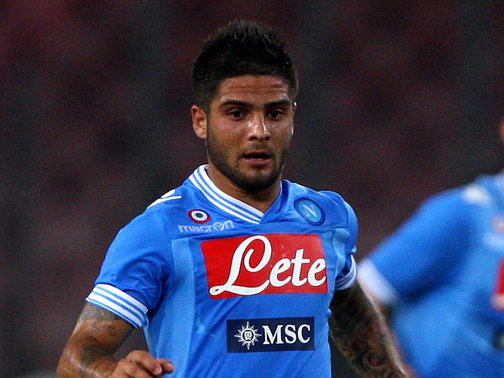
Lorenzo Insigne could he change Italy
It was that way that he came to the attention of Peppino Pavone, the director of sport at Cavese, a little club down the Amalfi coast. For those unfamiliar with Pavone, he was the talent scout behind Zdenek Zeman’s ‘Miracle Foggia’ of the early `90s, discovering the likes of Beppe Signori, Ciccio Baiano, Roberto Rambaudi, Igor Shalimov, Dan Petrescu and Jose Chamot. Things didn’t work out for Insigne on loan at Cavese. But it wasn’t all for nothing.
In 2010, Pavone and Zeman made a romantic return to Foggia to see if they could bring the good old days back to their former club, who were then in the third division. To do so, they needed to pretty much start from scratch, and were looking for players that fit into their plans. Remembering Insigne from his time at Cavese, Pavone recommended him to Zeman. Not overly impressed by what he saw on tape, he trusted his old friend’s judgment, loaned Insigne and wasn’t made to regret it.
There’s no better or harder apprenticeship for a young forward in football than one under Zeman’s tutelage. You train hard, running up and down the stadium’s steps or through forests for hours on end, as il Boemo sits and smokes, but once on the pitch there’s fun to be had, as there’s none of that boring stuff like defending, just attacking. Joined up front by Marco Sau, another promising teenager drafted in on a temporary basis from Cagliari, the pair blitzed the Lega Pro Prima Divisione, ending the campaign with 20 and 19 goals respectively. Foggia finished sixth with the best attack and the worst defence.
Zeman left for Pescara that summer and asked Napoli if he might take Insigne with him across to Abruzzo. There at the Stadio Adriatico, he worked another of his miracles with a team composed almost entirely of kids, the brightest among whom like, for instance, goalkeeper Mattia Perin and playmaker Marco Verratti, who is now at Paris Saint-Germain, have featured in Prandelli’s Italy squads. Insigne wasn’t any less impressive. In fact he was more so.
The step up to Serie B was as easy to him as a step over. He got his name on the scoresheet 18 timesand laid on 14 assists for his teammates. Only Ciro Immobile scored more as Pescara earned promotion to Serie A, and Zeman, who is in part defined by not winning anything in his career, won Serie B.
Mindful of the progress he had made and how he had contributed significantly to Pescara playing the best football in Italy last season, Napoli said, ‘enough is enough’. Insigne wasn’t going out on loan again. He was ready for Serie A. The timing of his development could not really have been any better for Napoli.
Ezequiel Lavezzi had asked to leave a year ago. Given his status as a fans’ favourite, Naples had become suffocating for him. He couldn’t go out without being mobbed and wanted a change. So Napoli prepared for his succession. They signed Eduardo Vargas for £10m from Club Universidad de Chile in the spring of 2012 as Lavezzi’s replacement, but despite a bedding-in period he has failed to settle. How fortunate then that they should have a home-grown player waiting in the wings with the star quality to make the supporters forget Lavezzi in a hurry following his £22.8m move to Paris Saint-Germain.
Even already, there are some who believe Insigne to be better than his forebear, an upgrade, a case made rather prematurely on the basis of a virtuoso performance in Napoli’s first pre-season game against Bayer Leverkusen and because he is known for scoring tens of goals, something that was lacking from Lavezzi’s game and had attracted criticism. Neapolitans are of course prone to exaggeration, but it certainly wouldn’t be wide of the mark to take the argument down a level and suggest that Insigne is a stronger player than Lavezzi was at his age.
The feeling is that Lavezzi never had a formal football education like the one players get in an Italian youth system, which, it must be said, can also coach all creativity out of a player. Notice how, for instance, it was only in the last two years when a tactician like Walter Mazzarri, who places such an emphasis on tactical discipline and rigor, got hold of Lavezzi that he evolved from a frustrating anarchic player to one of the most ruthless counter-attackers in Europe.
Insigne instead has had all of this drilled into him from an early age and it’s one of the reasons why Prandelli has taken such a liking to him. “He is a modern attacking player, actually the prototype of a modern attacking player,” the Italy coach told Il Corriere dello Sport. “His actions are always in function with the team, they are never an end in themselves: he is generous on a tactical level. All this is thanks to the coaches he’s had, like Zeman, who has taught him the timing of the actions.”
Mazzarri has been quick to keep the boy’s feet on the ground, admitting that “he deserves to be in Serie A, [but] I don’t know if he is ready for the national team yet.” Insigne doesn’t seem like the type to let things go to his head. Sure, he has drawn comparisons with Antonio Cassano for his playing style and there’s a temptation, as there always is with a Neapolitan, to talk about the Scugnizzo, the so-called street urchin or Artful Dodger-type whose description Diego Maradona and Ezequiel Lavezzi conformed to.
Short in size, high in skill, he has the profile of a fantasista. Standing at 5ft 3in, Insigne is 2cm shorter than Maradona, 3cm shorter than another Napoli hero Gianfranco Zola, and 6cm shorter than Lionel Messi, or his ‘twin’, as some fans would have it. But Insigne has another idol and in this case he couldn’t have picked more wisely. On his bedroom wall in Frattamaggiore hung a poster of Alessandro Del Piero. “I look up to him,” Insigne said. “As a kid, I watched all of his goals and I’d love to ‘steal’ his curling shots.”
A Neapolitan Del Piero, eh? Just think about that for a moment. Imagine the kind of adulation he’d receive for achieving even half the success that Del Piero had at Juventus. This is Napoli after all, where there are still shrines and murals thanking Maradona for the two Scudetti he won in 1987 and 1990. Let’s not get ahead of ourselves. But wouldn’t that be something?
source
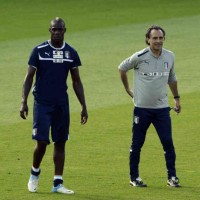
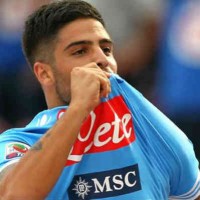
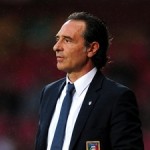

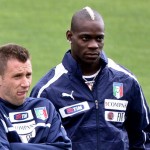






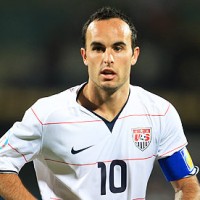
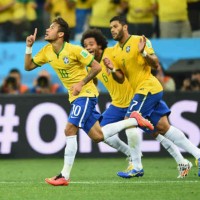
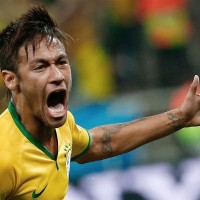
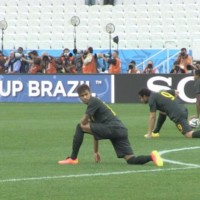
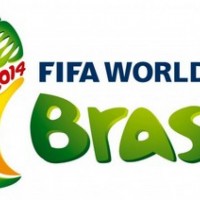
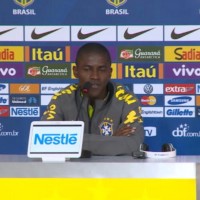
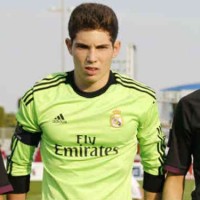
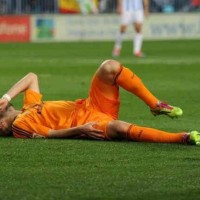
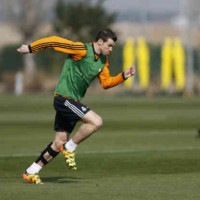
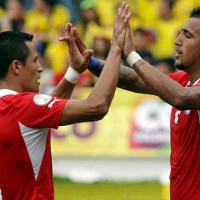
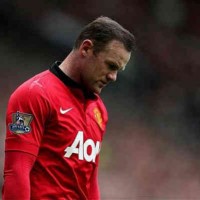
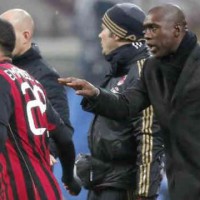
Pingback: ประเทศไทย()
Pingback: mesh lawsuit()
Pingback: boliger i Alanya()